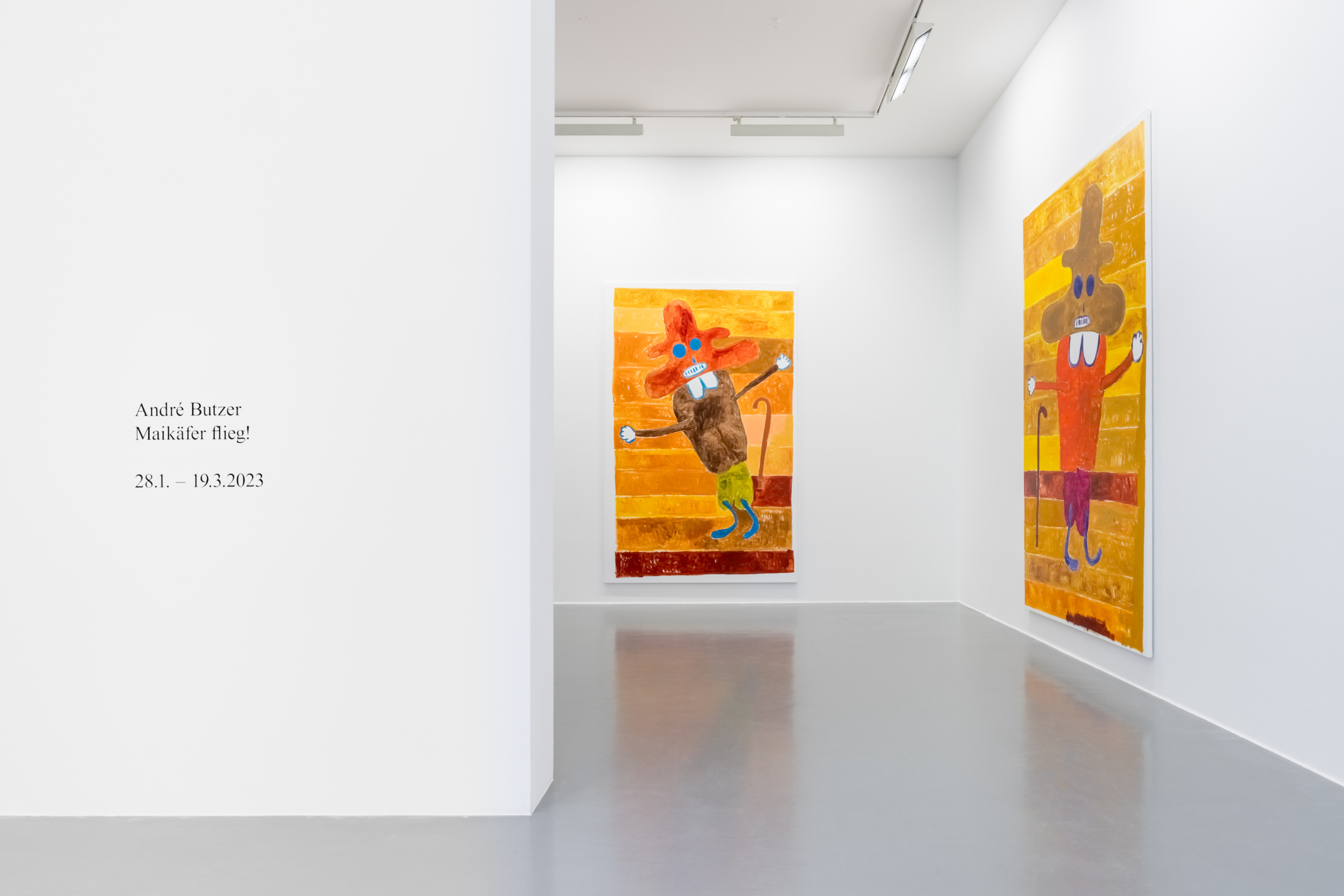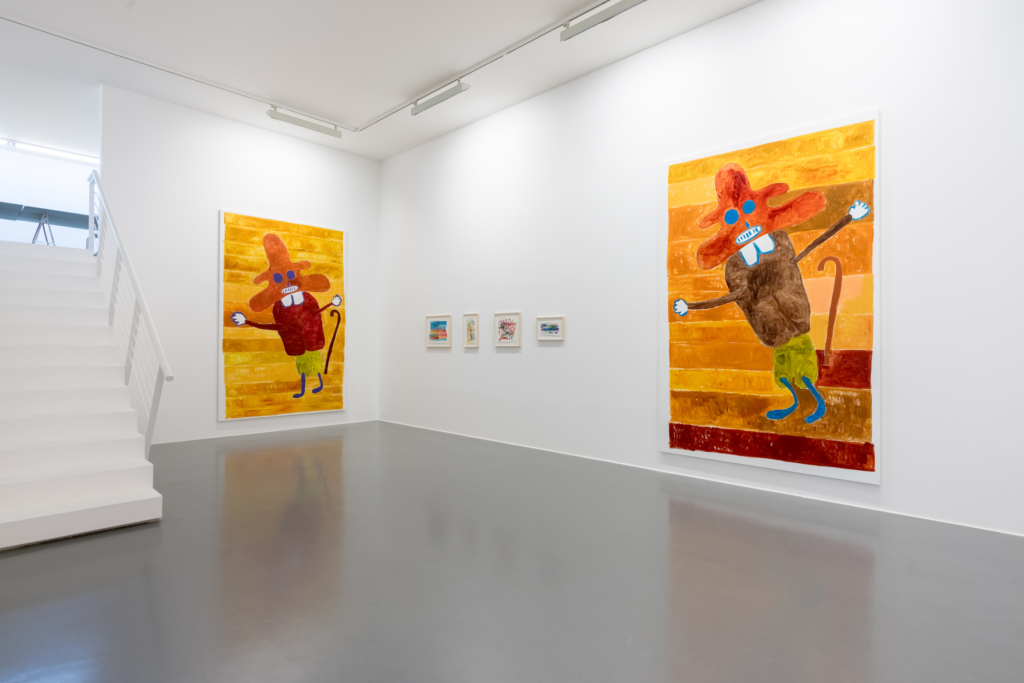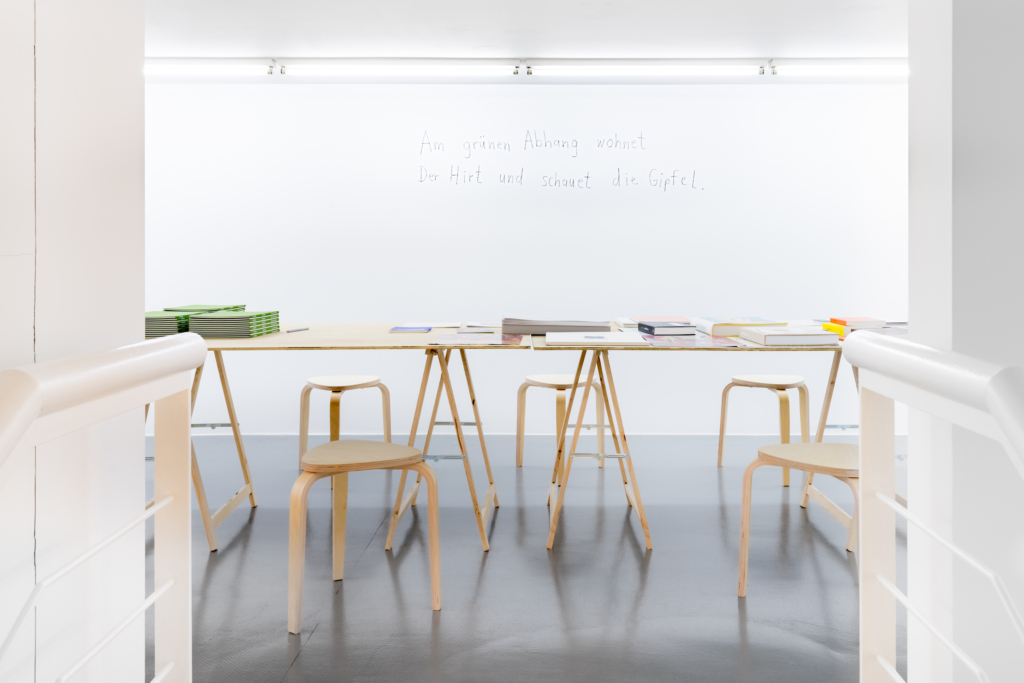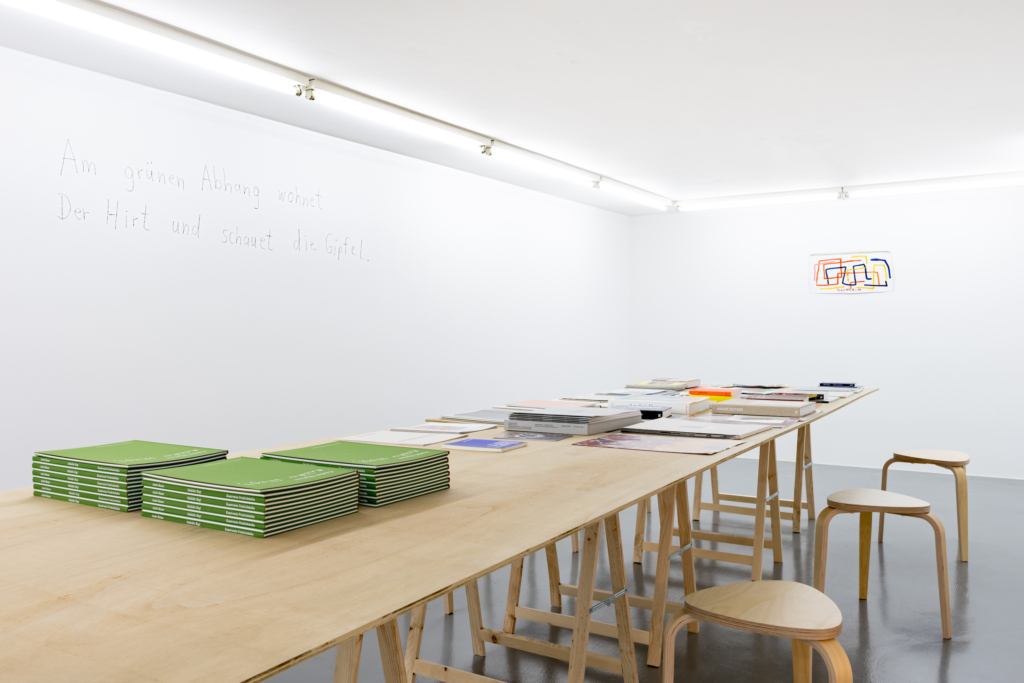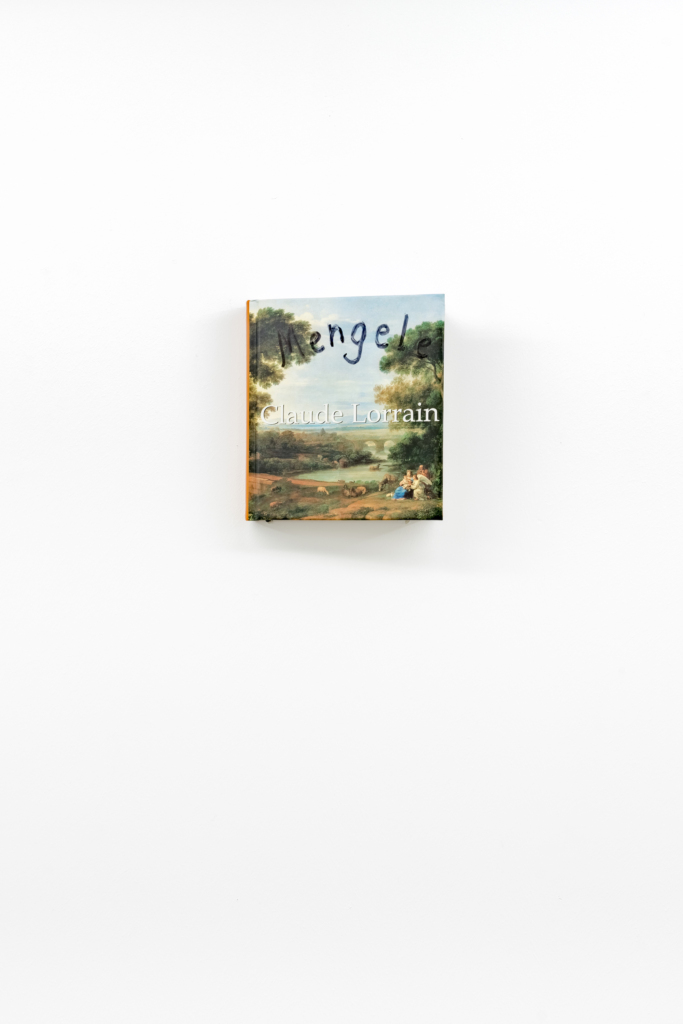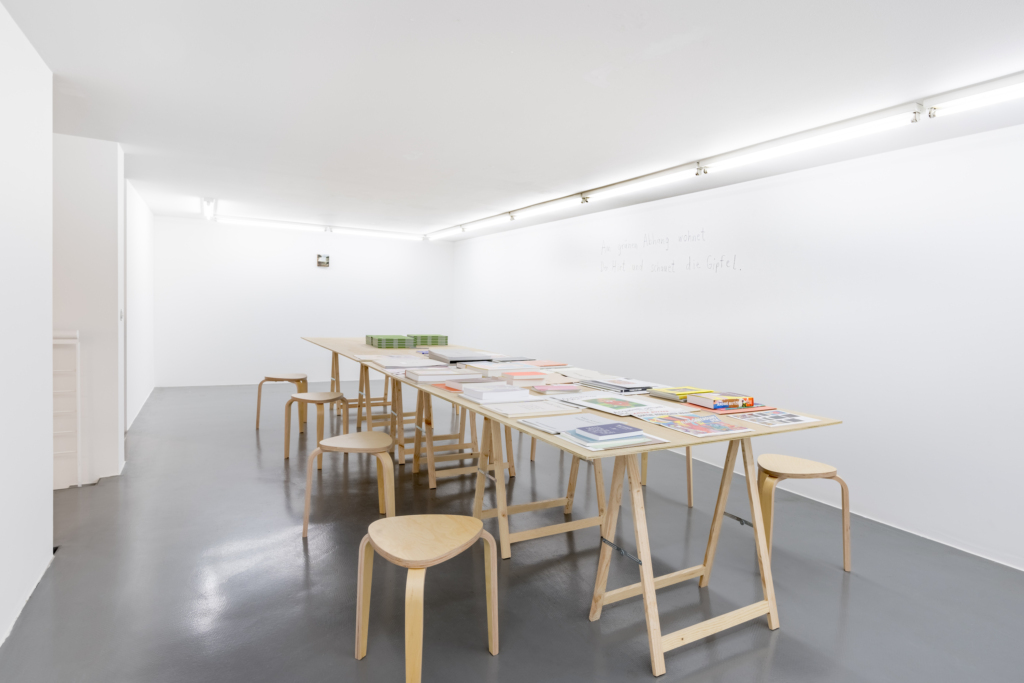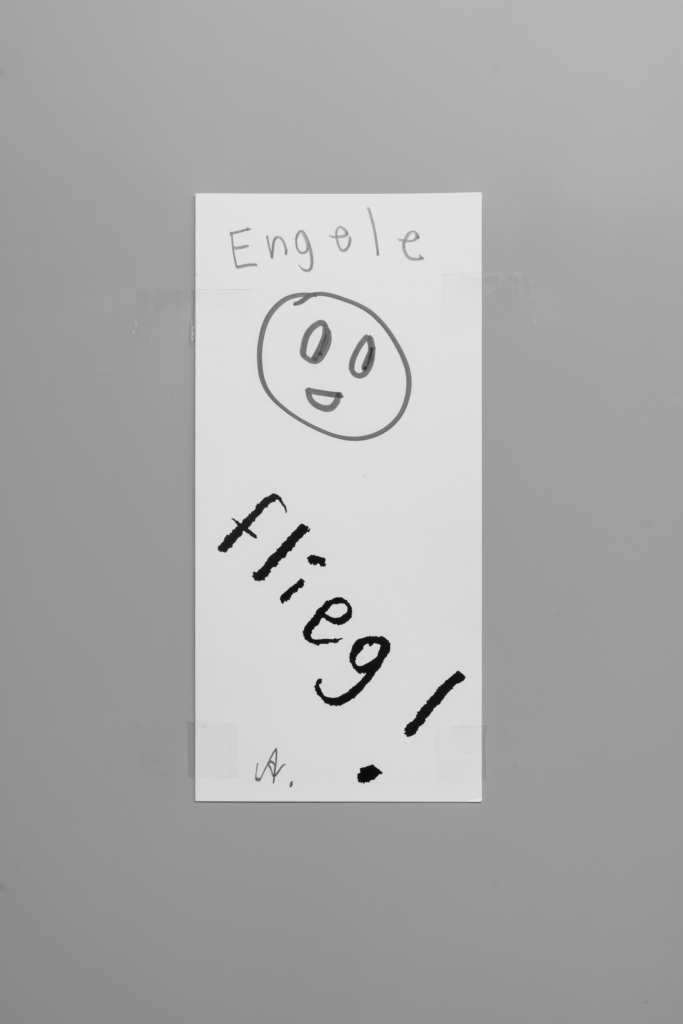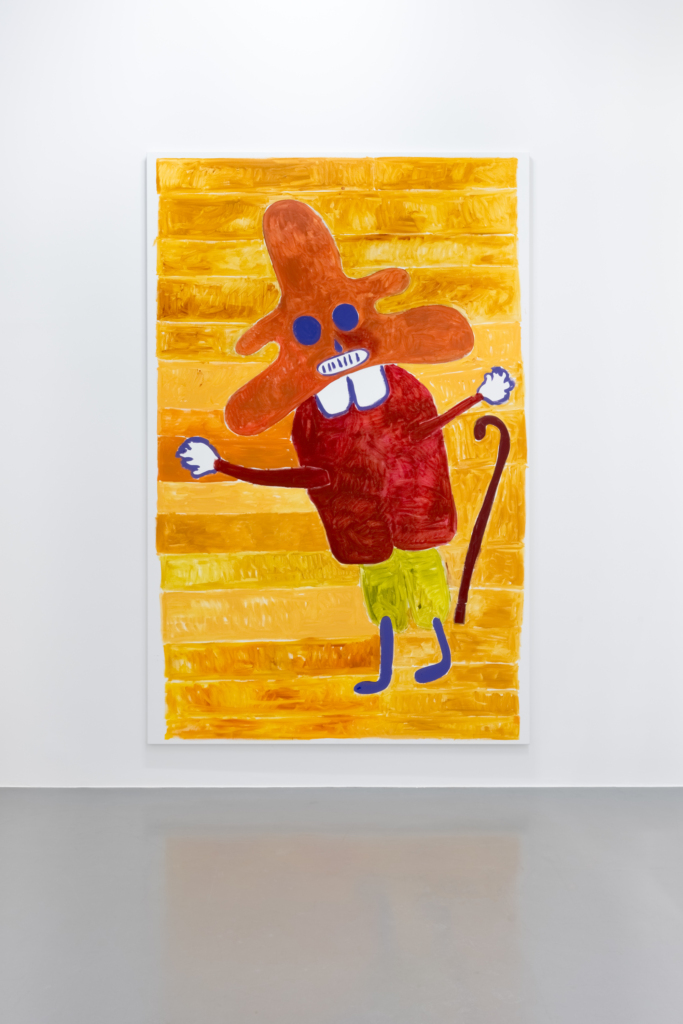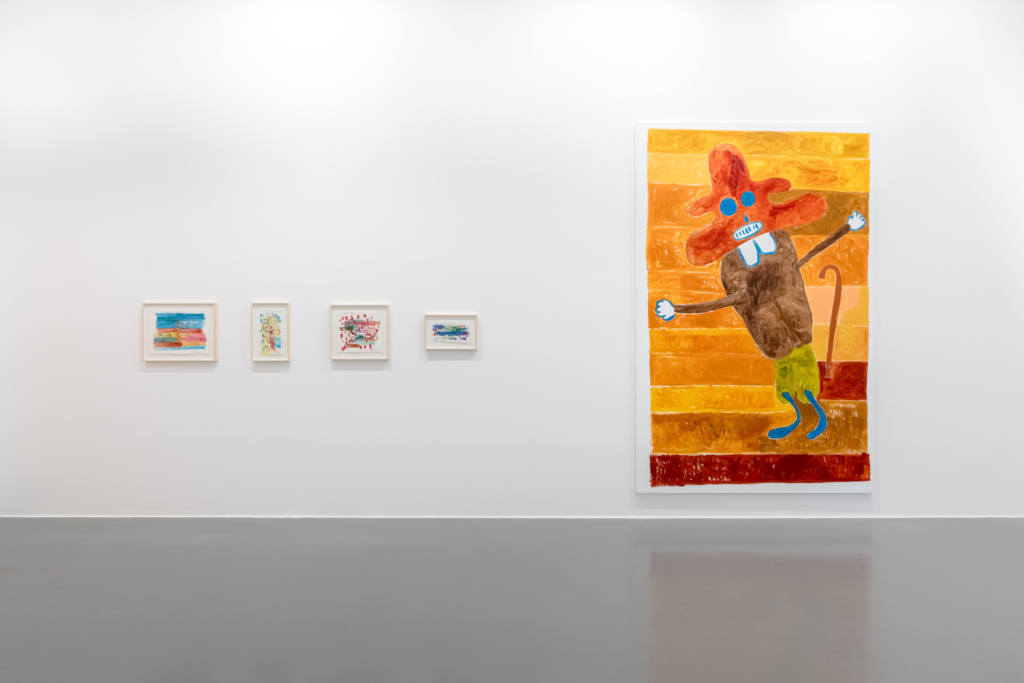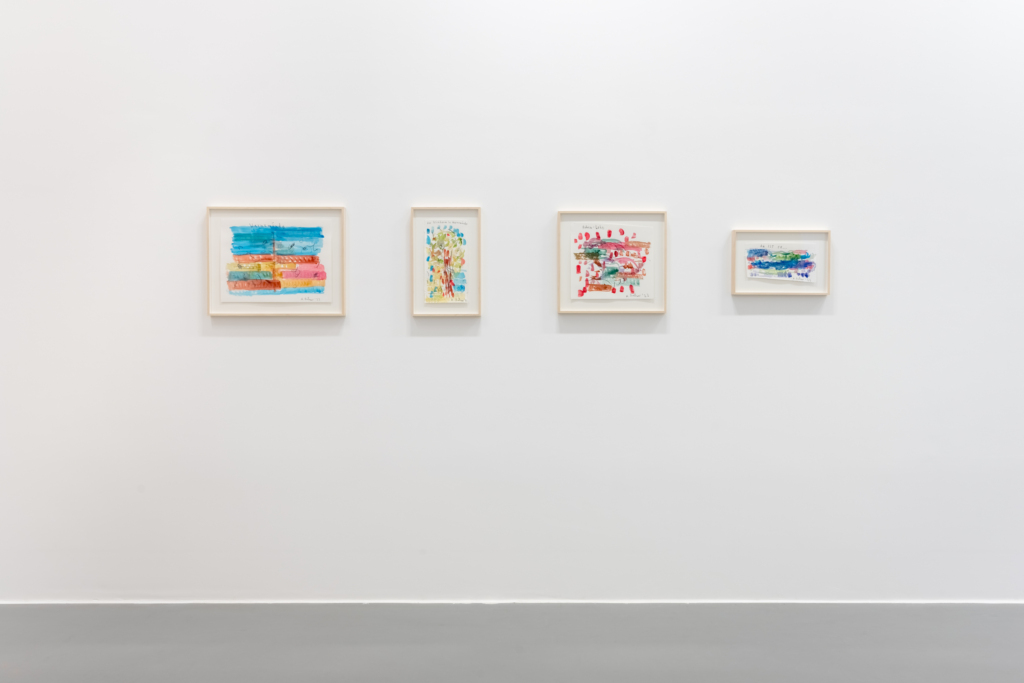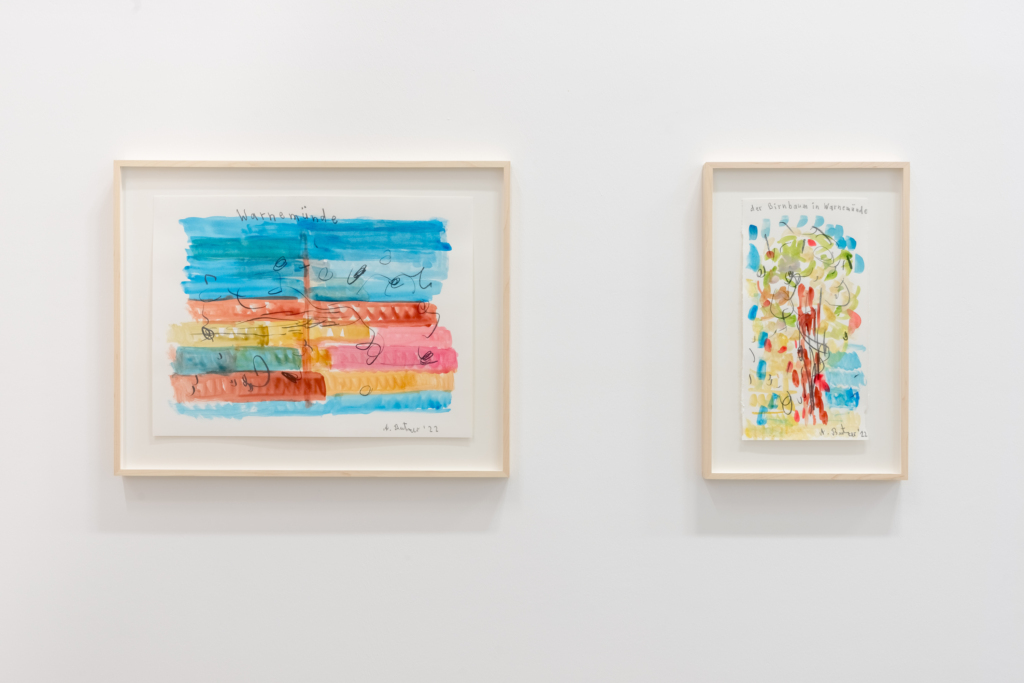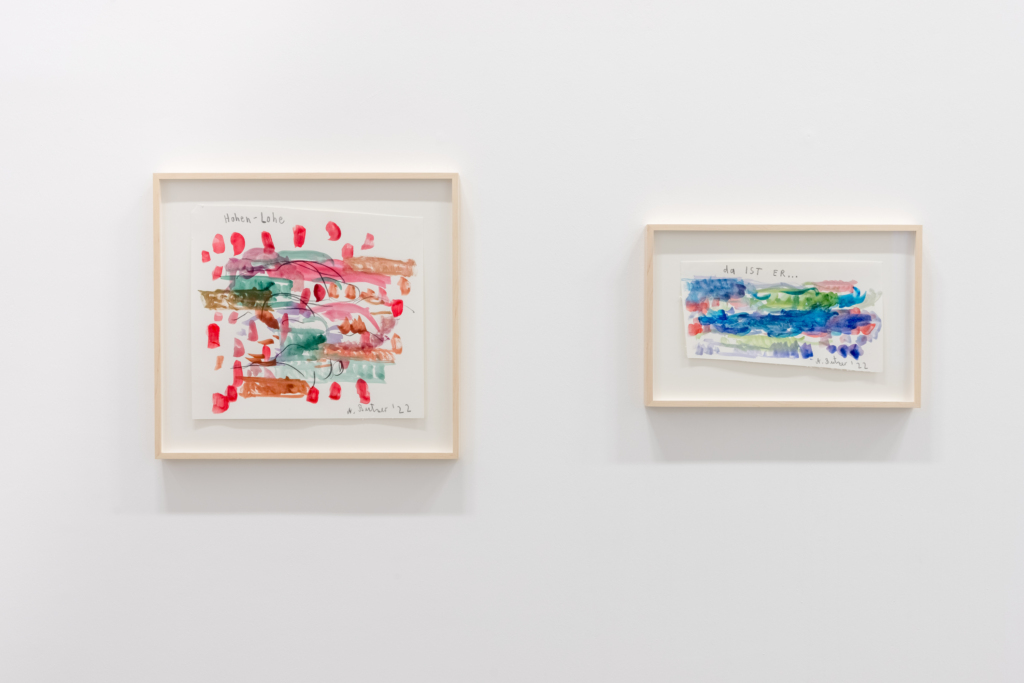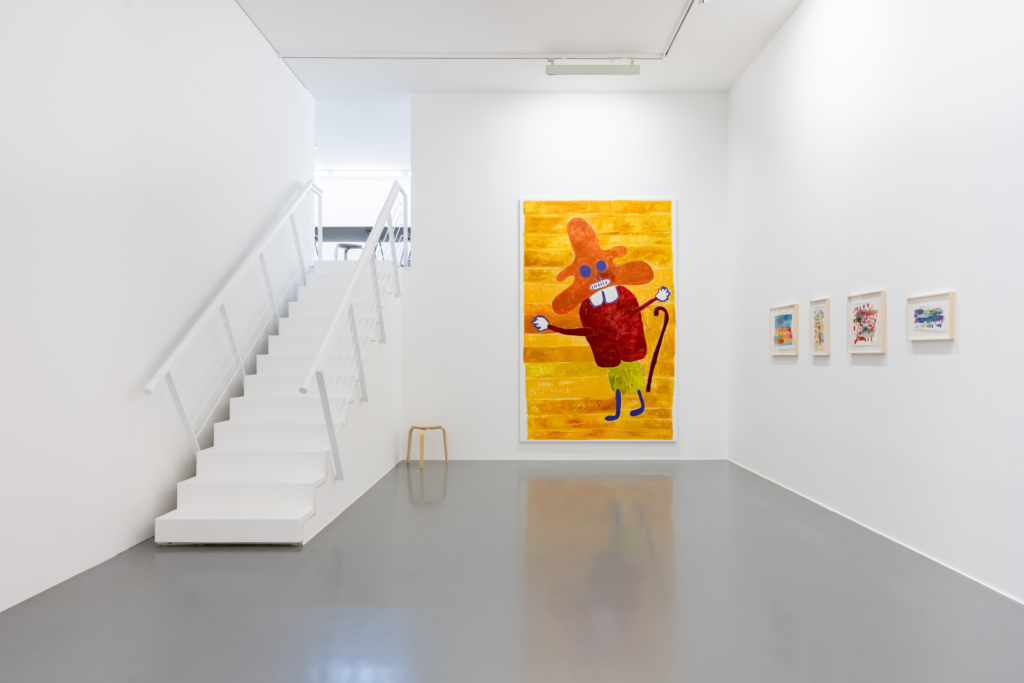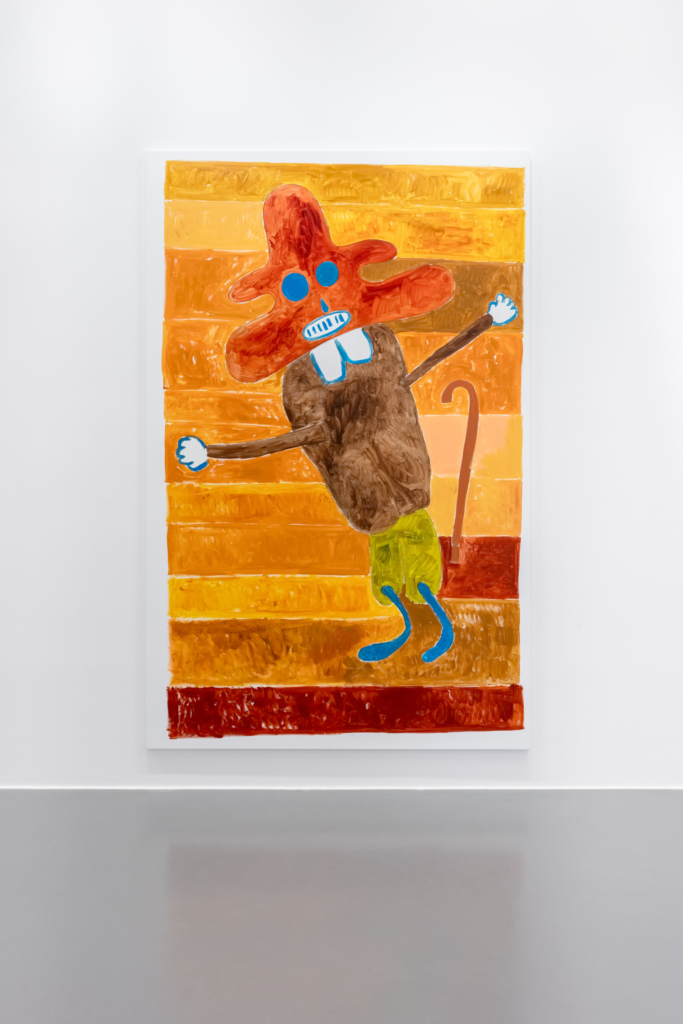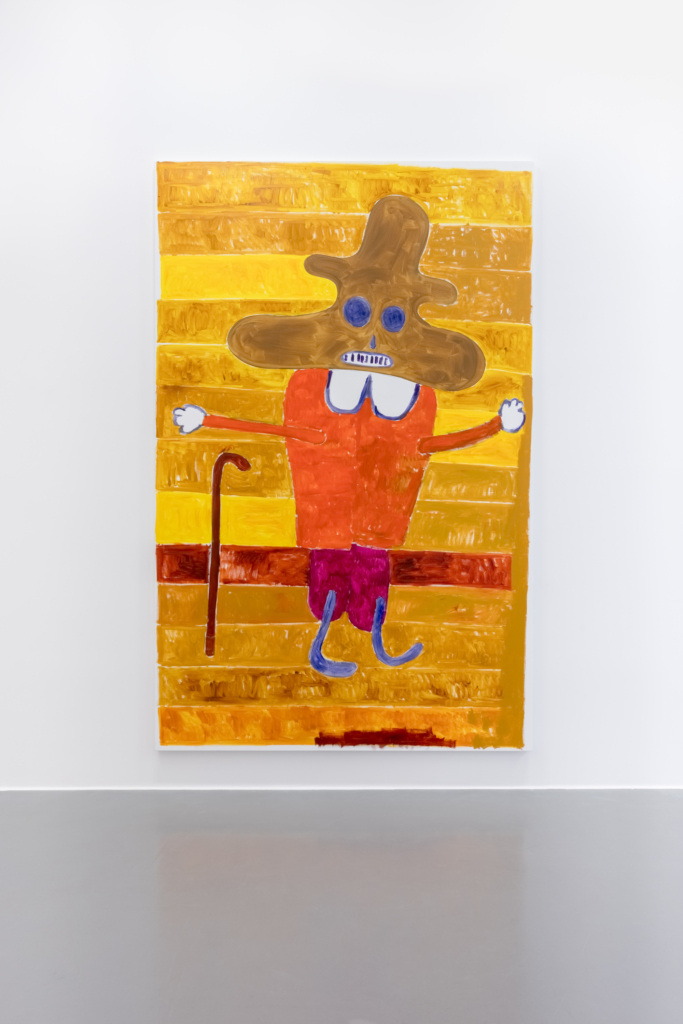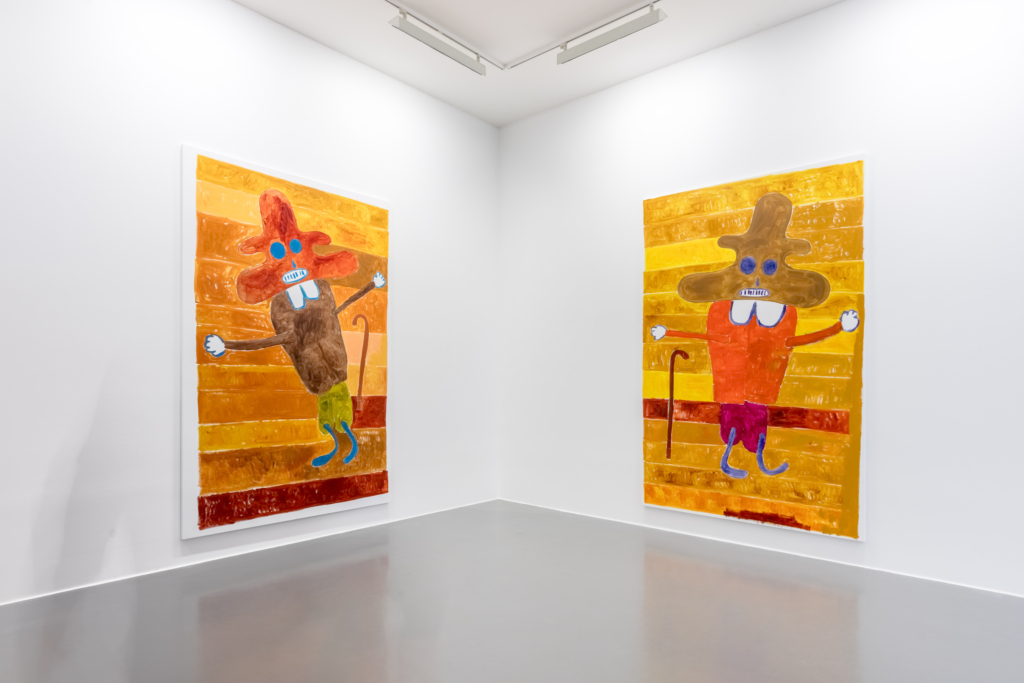André Butzer
Maikäfer flieg!
Maikäfer flieg!, the title of André Butzer’s solo exhibition at Kunstverein Friedrichshafen refers to the famous German folk and children’s song. Over the course of time, writers, artists and musicians have used the piece once and again. The atrocities of the Second World War, however, fostered its sad popularity significantly. In 1963, Paul Celan read »tiny sheaves of hope« from the fateful lines. In 1974, Anselm Kiefer associated it to Adolf Hitler’s »Nero Decree.«
In 2023, André Butzer calls his exhibition in Friedrichshafen Maikäfer flieg! The foundations of his œuvre being not only the upheavals in painting but all the horrors and promises, the industrial revolution and modernity have spawned. Including the National Socialists’ mass extermination as well as the premises of capitalist mass consumption, Friedrich Hölderlin as well as Henry Ford, Walt Disney or Coca-Cola.
From on 1999 he has developed Science Fiction Expressionism as his personal pictorial universe, in which the fundamental conflict of human existence manifests itself—the inseparability of good and evil. Past, present and future merge and give rise to a fictitious pictorial world, albeit one imbued with the real and his sensibility. In this world, everything beautiful and horrific, bliss and misfortune, all love and all hate, joy and sorrow are inseparably equal parts of human existence.
For the Kunstverein, he has created four watercolors along three monumental paintings, which grew from his contemplation of Edvard Munch’s time in Warnemünde in 1907–1908. Butzers personal experiences, such as a train trip to the Polish seaside town of Kołobrzeg in 2003, are further points of reference. These serial paintings of one of his iconic characters, the »Man of Shame,« embodying the inherent contradictoriness of human existence as well as the inner strife, modernity has left behind.
As an offspring of mass media and the entertainment industry, the Man of Shame holds within himself all the abysses of earthly existence. In search of peace and a place in the world, he becomes a wanderer. It is here, where the pictorial figure and Butzer’s biography coincide. He, too, is a homeless wanderer who paints himself throughout history into a vague future. His own paintings harbor the very possibility to endure and withstand all contradictions that made him a restless seeker as well.
André Butzer
1973 born in Stuttgart, lives in Berlin-Wannsee
Instituional Solo Exhibitions: Museo Thyssen-Bornemisza, Madrid, and Kunstverein Friedrichshafen (2023); Friedrichs Foundation, Weidingen (2022); YUZ Museum, Shanghai, and Museum of the Light, Hokuto (2020); IKOB Musée d’Art Contemporain, Eupen (2018); Växjö Konsthall, Växjö (2017); Bayerisches Armeemuseum, Ingolstadt, and Neue Galerie Gladbeck (2016); Kunstverein Reutlingen (2015); Künstlerhaus – Halle für Kunst und Medien, Graz (2014); Kestnergesellschaft, Hanover, and Kunsthistorisches Museum / Theseustempel, Vienna (2011); Kunsthalle Nuremberg (2009); Kunstverein Ulm (2005); Kunstverein Heilbronn (2004)
Selected Public Collections: Art Institute of Chicago; Carré d’Art – Musée d’Art Contemporain, Nîmes; Children’s Museum of the Arts, New York; Contemporary Art Collection of the Federal Republic of Germany, Bonn; Deichtorhallen Hamburg; Friedrichs Foundation, Weidingen / Bonn; Hall Art Foundation, Reading / Derneburg; IKOB Musée d’Art Contemporain, Eupen; Kupferstichkabinett, State Museums, Berlin; LACMA, Los Angeles; Marciano Collection, Los Angeles; MOCA, Los Angeles; Museo Thyssen-Bornemisza, Madrid; National Gallery / Hamburger Bahnhof – Museum für Gegenwart, Berlin; Paula Modersohn-Becker Museum, Bremen; Pinakothek der Moderne, Munich; Rubell Museum, Miami; YUZ Museum, Shanghai
Text / Curator: Hannah Eckstein
